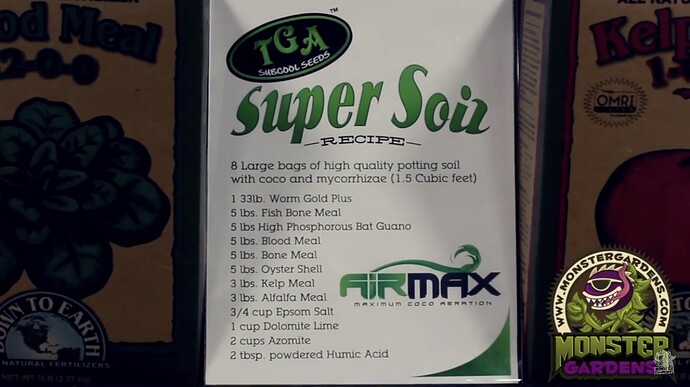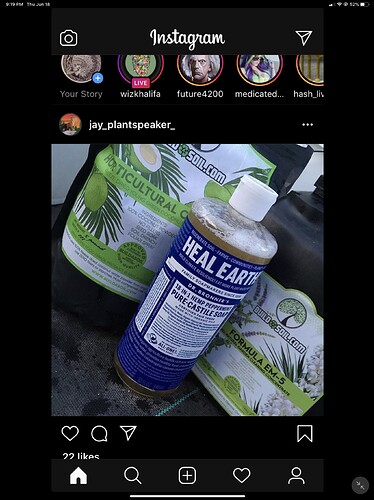Hey friends
I’ve got a bunch of ladies in a greenhouse for the next few weeks until things get warm enough to move them outside.
We tried a rogue grow in garbage bags last year, and it worked out decently well. But were hoping to really amp it up this year, as well as set ourselves up for some long term success.
The plan is to grow straight for extraction (not that it makes a huge difference). But it does make me a little less worried about light mold or occasional pests.
I have a couple thousand pallets available to me. And was going to make some half size boxes out of them and fill it with a grow fabric. Should allow for nice drainage, as well as give them ample room to grow.
My question is… What do you recommend for long term soil health? I know there’s lots in the way of hugelculture, permaculture, biodynamics, mycelium, bacteria, and a host of other things involved to make the soil really healthy. Maybe throw in some complimentary plants in the fall for some nitrogen fixing?
My hope is to be able to use these year after year, and make the soil healthier as I grow. I know that cannabis seems to be resource intensive, so was hoping for a system of longevity in soil health.
I’ve hit the search bar a bit, and I’m off to a start. But does anyone have more specifics? References? Their tried and true methods? Wook science is fine, provided it works 
@spdking I know you had mentioned hugelculture as a big help in your garden.
Does anyone else have any tips?
4 Likes
Will you be starting with soil that’s been in the ground of your area or using bought soil to start out? This will make a difference in what to mention per use as per bpught of course already has SOME bot a lot but some nutrients to it. You can get away with a cheap super soil & be able to use that for years to come with light amending of the soil.
2 Likes
I’ll likely bring in some quality topsoil as a starting point. Probably about 50//50 with some $$ stuff and some regular quality stuff.
2 Likes
A lot depends on where you are and what you can get. I would look for the nearest source of animal manure, especially in composted piles if you can get it. Compost itself is good, but ask what it was made from. Leaves are mostly nitrogen, but composted animal bones and other parts have p and k.
You want to layer your manure/compost with some sort of biomass. Old hemp or thc plants, hay, alfalpha are all good. Let that rot over a winter and you will have a start. It is better to not till it if you can and keep layering more material over time. You can also add whatever other organic ferts you like, such as kelp, worm castings, and guanos.
If anyone reading this is considering horse manure, you should test it for herbicide contamination first, before applying. There is an herbicide called 2 4 d that goes right through a horse and will ruin soil for many years. Take a sample and sprout a bean seed in it, and I mean an actual bean, kidney, lima, green bean. Look at the leaves when they form. If they look normal, it’s fine. If it looks like a radioactive mutant Chernobyl bean, that’s herbicide.
I should add that it is prudent to also bean test your compost first and especially anything you buy in a bag. I would not recommend most bagged manure products because they are often too high in salts.
3 Likes
Ffof/ black gold seedling start /vermiculite(or BAS LIGHT MIX), gypsum, crab meal, fish meal, bone meal, blood meal, pot ash, rock dust, alfalfa meal, kelp meal, cedar wood chips covered with barley straw to retain top moisture, bat guano, AGT-50, granule silica, worm castings,figs, red wigglers. With that you’ll have a great living soil bed, continue to feed then a avacado with all those ingredients ground up & slapped back in the hull & placed randomly by the plants. Inoculate the soil with a good myco (especially into transplant spots.)
Add in live aloe Vera plants to the beds & the symbiosis will work through the roots to also feed the plants /garden, just make sure everything is watered!
Here’s SubCools recipe may he RIP
& some ipm from jay_theplantspeaker
1oz of dr bronners Castile soap, aloe, horticultural coconut water powder, EM-5.
6 Likes
Build raised beds with wire bottoms.
Don’t let anyone tell ya different…
Tons of different blends/recipes out there. An easy one is equal parts peat, aeration, compost and then order nutrient & mineral packs from build a soil.
They have the ingredients there too if ya wanna blend them yourself, but tbh, they don’t really upcharge much on the pre blended packs. You will end up spending more if you build it yourself, but have extra nutrients to save for later.
Top dressing and mulch FTW
7 Likes
Do you think the wire bottom > grower fabric?
I haven’t used the fabric for the bottoms. I would worry about gophers going through it…
That’s my main reason for even using a bottom in the raised beds.
1 Like
Then don’t even put a bottom in. Pointless.
More money for soil.
4 Likes
Depending on the wild life if you’re area I would build a whole box from cedar (natural pest repellent & durable for years to come). Use log like( no smaller than 3-5” circumference) to build the base & allow for draining. Then the sides out of the same & build a canopy frame with milled to be square 2x3’s. Cover all open sections with 1x1 or 2x2 chicken wire & then tan shade screen over that. You got a independent green house.
1 Like
How much soil should I use per plant? 100L? In a raised bed situation
How big of plants you wanna grow that is the ultimate question, take into consideration a root base you’d like to establish for each. If I were doing outdoor I’d be going atleast 150-200 gal circumference for each, so around a 4x4- 5x5’ section at 5-6” deep then allow for 4-5”above ground built up. (Mixing this much soil will be best with an auger, faster too!) you can do 12 plants & have a massive garden with this or divide the sections for plants that can yield up to a lb or more with smaller root base sections for each plant ( not as spread out allowing more planting, but smaller space for root=fruit theory.)
3 Likes
I’ve got an excavator with a big scoop and a couple friends with shovels. Figured that would be ok for mixing.
The pallet boxes I was gonna make we’re gonna be 2’ high, and 3’ x 4’. Added bonus for pallet boxes, is they’re movable by skid steer if I’m finding better light in areas.
A layer of wood/logs on the bottom for the hugelculture. Then toss the dirt in.
Was thinking 2-3 plants per box.
2 Likes
Horse and cow manure mixed with topsoil is the perfect NPK and is slow-release as long as it’s been composted and leached. It will keep the perfect aeration, moisture content and fertilizer value outdoors.
If you want to build the soil long-term get a good carbon source that will foster beneficial bacteria. That means humic acid or biochar that has been charged. I could rep my product AGT-50 all day, but it is immediately soluble for foliar use. Along with spikes of short term fertilizer and biostimulants that carbon content is truly going to be the key to long-term soil building.
5 Likes
Thanks
I’ve got a ton of burnt out wood and ash around. I’ll make sure to throw it all in the mix! 
2 Likes
I would make sure it is leached so it doesn’t jack the soil pH. Mix 50/50 with a green source and compost well to charge it properly.
4 Likes
Good call
It’s been sitting out in the rain in a field at least  I’d think it should be safe
I’d think it should be safe
1 Like
![]()

